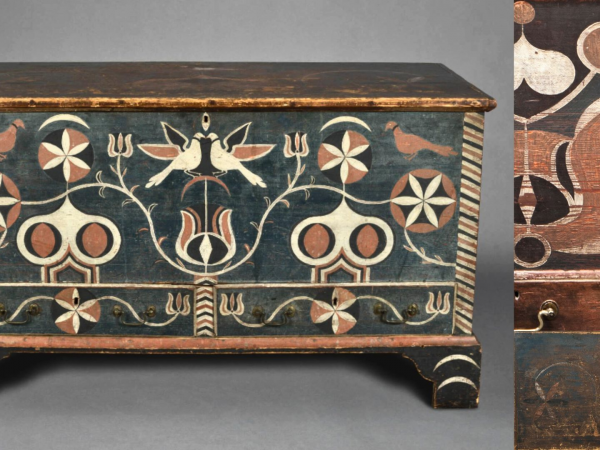Painted Geometry: The Folk Art of Johannes Spitler
Explore the bold painted geometric designs of early 19th-century cabinetmaker Johannes Spitler. Working in the late 18th and early 19th centuries in Virginia’s Shenandoah Valley, Spitler drew upon his Swiss and German heritage to ornament local joiners’ work with brilliant, symbol-laden designs. His painted chests and clock cases—adorned with stylized birds, hearts, crescent moons, tulips and compass-drawn flowers—reflect a worldview in which every motif carried meaning: abundance, faith, love, fertility, and spiritual growth. The vines and flowers that entwine his designs speak not only to the natural cycles of an agrarian life but also to the inner flowering of the human spirit.
In this hands-on course, students will study Spitler’s use of striking motifs—hearts, the flower of creation, birds, tulips, and architectural forms—and learn how he used compass, straightedge, and a limited palette to create his distinctive folk art style. Participants will paint these motifs on wood panels using historically informed materials and techniques, including making milk paint from scratch with natural pigments, milk, and slaked lime.
By studying and practicing such traditions, participants can explore how beauty and symbolism were once inseparable from daily life—how even the most humble object could become a vessel of meaning.
This course offers both a technical and contemplative engagement with a craft tradition that celebrates the unity of form, function, and identity.
Booking Options
Explore the bold painted geometric designs of early 19th-century cabinetmaker Johannes Spitler. Working in the late 18th and early 19th centuries in Virginia’s Shenandoah Valley, Spitler drew upon his Swiss and German heritage to ornament local joiners’ work with brilliant, symbol-laden designs. His painted chests and clock cases—adorned with stylized birds, hearts, crescent moons, tulips and compass-drawn flowers—reflect a worldview in which every motif carried meaning: abundance, faith, love, fertility, and spiritual growth. The vines and flowers that entwine his designs speak not only to the natural cycles of an agrarian life but also to the inner flowering of the human spirit.
In this hands-on course, students will study Spitler’s use of striking motifs—hearts, the flower of creation, birds, tulips, and architectural forms—and learn how he used compass, straightedge, and a limited palette to create his distinctive folk art style. Participants will paint these motifs on wood panels using historically informed materials and techniques, including making milk paint from scratch with natural pigments, milk, and slaked lime.
By studying and practicing such traditions, participants can explore how beauty and symbolism were once inseparable from daily life—how even the most humble object could become a vessel of meaning.
This course offers both a technical and contemplative engagement with a craft tradition that celebrates the unity of form, function, and identity.


